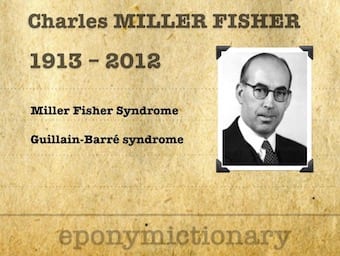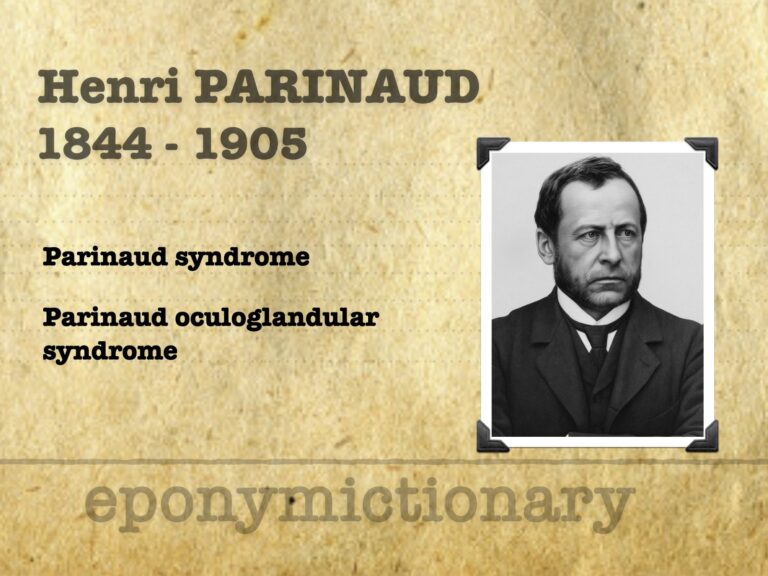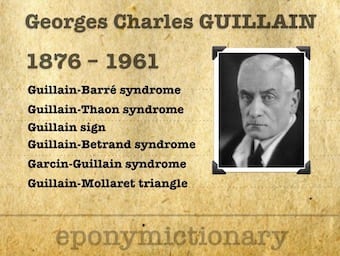
Leopold Von Schrötter
Leopold Schrötter Ritter von Kristelli (1837-1908) an Austrian internal physician. He is known for his description of effort thrombosis (upper limb DVT) eponymously termed Paget-Shroetter syndrome in 1884.

Leopold Schrötter Ritter von Kristelli (1837-1908) an Austrian internal physician. He is known for his description of effort thrombosis (upper limb DVT) eponymously termed Paget-Shroetter syndrome in 1884.

Irving Freiler Stein (1887-1976) was an American gynaecologist. remembered for his contribution to the field of infertility and eponymously for the Stein–Leventhal Syndrome (1934)

Charles Miller Fisher (1913 - 2012) was a Canadian neurologist. Miller Fisher syndrome (1956) an acquired nerve disease variant of Guillain-Barré syndrome.

Visceral artery aneurysm (VAA) and visceral artery pseudoaneurysm (VAPA) are arterial aneurysms affecting the coeliac, superior mesenteric, or inferior mesenteric arteries and their branches.

Henri Parinaud (1844-1905) was a French ophthalmologist and neurologist. Parinaud Syndrome (1883) aka Dorsal Midbrain Syndrome

Charles S. Hallpike (1900–1979), British neuro-otologist, co-devised the Dix–Hallpike manoeuvre, clarified Menière’s disease pathology, and pioneered vestibular physiology.

Axillary and subclavian vein thrombosis is an important diagnosis to make. The incidence of pulmonary embolism (PE) and long-term sequelae is high in untreated cases.

André Strohl (1887-1977) was a French physician and physicist. Guillain-Barré-Strohl syndrome described in 1916

Jean-Alexandre Barré (1880–1967). French neurologist ; co-described Guillain–Barré syndrome; pioneer in vestibular neurology and semiology; eponyms include Barré test and Barré–Liéou syndrome.

Michael Leo Leventhal (1901-1971) was an American gyecologist. Leventhal is remembered for his contribution to the field of infertility and eponymously for the Stein–Leventhal Syndrome (1934)

Georges Charles Guillain (1876-1961) was a French neurologist. Multiple neurology-related eponyms including Guillain-Barré syndrome

A 20-year-old male presents with a tender midline neck mass which has developed over the preceding few days. He is systemically well.